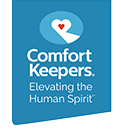The National Institutes of Health (NIH), Senior Health reports that approximately 76 million Americans get food poisoning, or foodborne illnesses, each year, and of those about 5000 die. Foodborne illnesses are caused by eating foods that are contaminated with bacteria, protozoa, or other microbials and viruses. The real tragedy here is that in most cases these foodborne illnesses are preventable simply by using proper food handling and storage methods.
Food poisoning is especially detrimental to seniors, causing them to be sicker longer with more acute symptoms. As people age, their immune systems slow down and are not as effective in combating illnesses. Older adults’ bodies do not produce as much stomach acid and their digestion slows, both making it difficult to eliminate bacteria that enter the system. Seniors are also more likely to be suffering from chronic illnesses, which affect the body’s ability to ward off disease. Additionally, older people’s abilities to smell and taste are not as acute as when they were younger, making it difficult for them to discern when food has spoiled. This makes them more likely to eat foods that may be contaminated.
For these reasons, it is critical that seniors and their caretakers are able to immediately identify the symptoms of food poisoning and seek proper medical care and treatment. It is equally important, or more so, that they follow safe food preparation and handling methods.
Symptoms and Treatment of Food Poisoning
Symptoms of foodborne illnesses can start hours, days, or even weeks after eating contaminated food. They can range from mild to acute and can include nausea, diarrhea, vomiting, fever, and abdominal cramps that can last for one to ten days. Severe cases usually require hospitalization.
Seniors or caretakers who suspect a senior under their care is exhibiting symptoms should seek medical attention immediately. If they believe they can identify food has caused the illness, they should wrap it, label it clearly, and freeze it for testing. They should also keep any packaging that the food came in to help doctors identify the cause of the illness.
To diagnose food poisoning, doctors will generally want to know how long the symptoms have been present and when the food was eaten. Very often, they will take laboratory samples and cultures, such a blood and stool samples, to help with the diagnosis. In many cases, there may not be a definitive diagnosis of food poisoning, but the physician will treat it as such because the symptoms match.
When the senior does undergo treatment for food poisoning, it is imperative that he or she complete the full prescribing dosage of medication to ensure full recovery. Stopping medicines too soon may allow a recurrence of infection.
Preventing Foodborne Illnesses in Seniors
Thoroughly washing hands before handling and preparing food can greatly reduce the risk of contamination. Many foodborne illnesses come from oral-fecal transmission when people use the bathroom and do not properly wash their hands before handling food. The Food and Drug Administration (FDA) recommends washing your hands for at least 20 seconds before handling food.
Aside from hand washing, both the FDA and the Academy of Nutrition and Dietetics list these recommendations for safe food handling, preparation, and storage on their websites:
- Wash cooking items, such as cutting boards, with hot soapy water between food items.
- Rinse fresh fruits and vegetables thoroughly.
- Raw meats and poultry do not need to be washed. Washing can spread bacteria to other foods, surfaces, and utensils.
- Separate raw meat, poultry, fish, seafood, and eggs, and their juices, from ready-to-eat foods. Use one cutting board for fresh fruits and vegetables and a separate one for raw meat, poultry, fish, seafood, and eggs. Do not place cooked food on a plate that held raw meat, poultry, fish, seafood, or eggs unless you first wash the plate with hot, soapy water.
- Cook meat to recommended internal temperatures to destroy bacteria: beef to 145°F; ground beef, veal and lamb to 160°F; pork to 160°F; poultry to 165°F; fish and seafood to 145°F; eggs to 160°F; and leftovers to 165°F. Check internal temperatures with a food thermometer.
- Thaw frozen foods in the refrigerator, not at room temperature. Place in a container to prevent juices, which may contain harmful bacteria, from contaminating other food. Food may also be thawed in a microwave and cooked right away.
- Keep your refrigerator at 40°F or below and your freezer at 0°F or below. Use an appliance thermometer.
- Never keep refrigerated leftovers more than three or four days, even if they still look and smell fine.
- Refrigerate food promptly. Never allow meat, poultry, fish, seafood, eggs, or fresh vegetables or fruit to sit at room temperature for more than two hours before storing in the refrigerator or freezer. Reduce this time to one hour when the room temperature is 90 degrees or above.
- Keep in mind that bacteria grow quickly in the “danger zone” between 40°F and 140°F, so hot food left out for serving should be maintained at an internal temperature of 140°F or above. Likewise, cold foods should be kept below 40°F to prevent bacteria growth.
- Follow “sell-by” and “use-by” dates on food packaging. Do not buy an item after the “sell-by” date, and throw out food when the “use-by” date passes.
- Do not take restaurant leftovers home unless you can refrigerate them within two hours of being served (one hour if air temperature is 90°F or above) – or if you can keep them in a cooler with ice or freezer gel packs until you arrive home.
The Academy of Nutrition and Dietetics also recommends that seniors avoid the following foods due to the increased risk of contamination:
- Raw, rare or undercooked meats and poultry (rare hamburgers, carpaccio and beef or steak tartare)
- Raw fish (including sushi, sashimi, ceviche and carpaccio)
- Undercooked and raw shellfish (clams, oysters, mussels and scallops)
- Refrigerated smoked seafood unless it’s in a cooked dish, such as a casserole.
- Unpasteurized dairy products (“raw” milk and cheeses)
- Some fresh soft cheeses (Brie, Camembert, blue-veined varieties and Mexican-style queso fresco) unless made with pasteurized milk
- Raw or undercooked eggs (soft-cooked, runny or poached)
- Food items that contain undercooked eggs (unpasteurized eggnog, Monte Cristo sandwiches, French toast, homemade Caesar salad dressing, Hollandaise sauce, some puddings and custards, chocolate mousse, tiramisu and raw cookie dough or cake batter)
- Raw sprouts (alfalfa, clover and radish)
- Deli salads
- Unpasteurized fruit and vegetable juices
- Refrigerated pâté or meat spreads
To get a detailed downloadable PDF file on food safety from the FDA click here or visit the FDA’s website.
References
- Academy of Nutrition and Dietetics. (December 2012). Food safety tips for older adults. Retrieved from http://www.eatright.org/Public/content.aspx?id=5982.
Mayo Clinic (June 2011). Diseases and conditions: Food poisoning. Retrieved from http://www.mayoclinic.org/diseases-conditions/food-poisoning/basics/symptoms/con-20031705. - National Institutes of Health, Senior Health. (n.d.). Eating safely: Keep food safe. Retrieved from http://nihseniorhealth.gov/eatingsafely/avoidfoodborneillness/01.html
- U.S. Food and Drug Administration. (June 2011). Food facts: Safe food handling. (PDF document) Retrieved from http://www.fda.gov/downloads/food/foodborneillnesscontaminants/ucm257049.pdf.
- U.S. Food and Drug Administration. (March 2013). Safe food handling: What you need to know. Retrieved from http://www.fda.gov/Food/FoodborneIllnessContaminants/BuyStoreServeSafeFood/ucm255180.htm.

